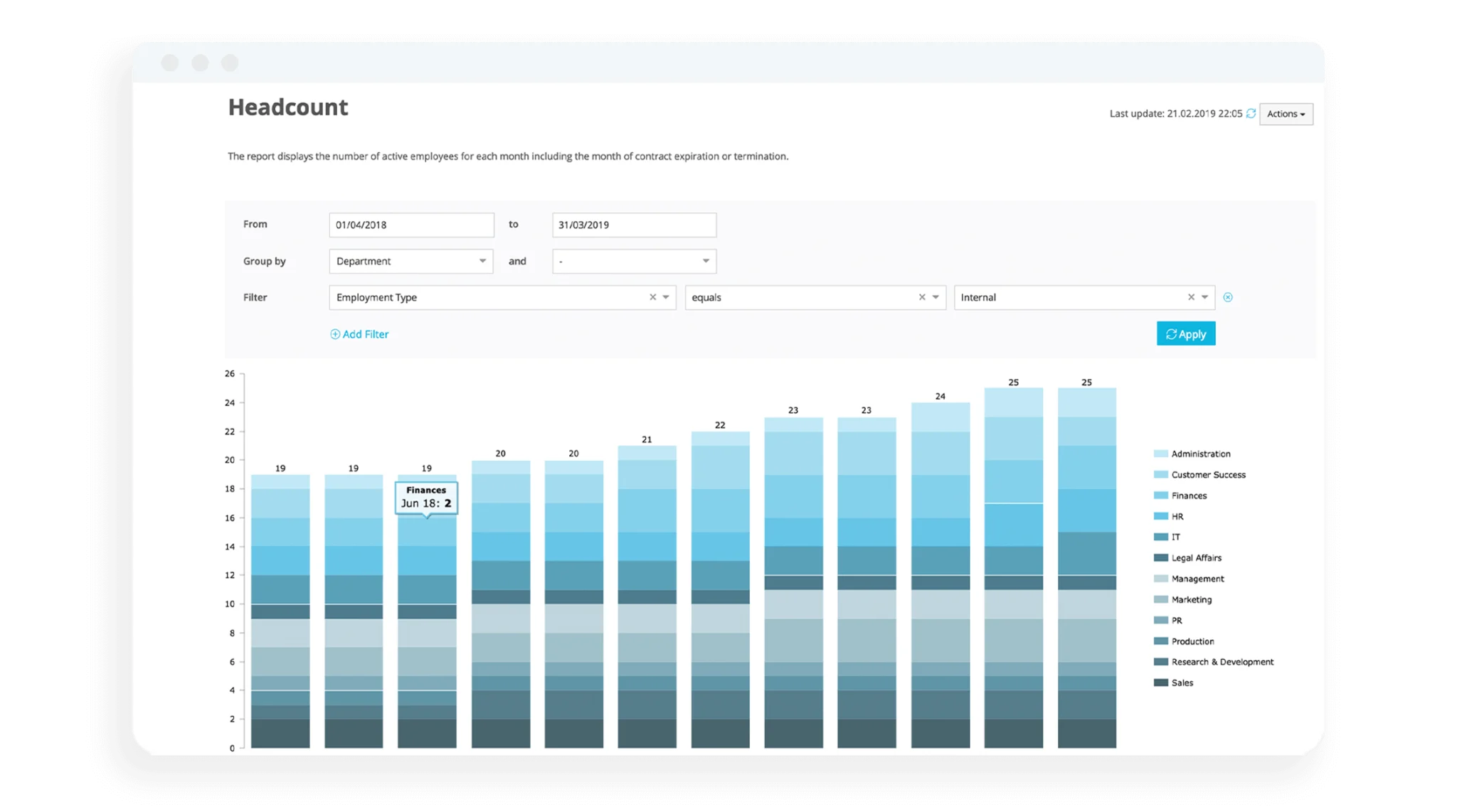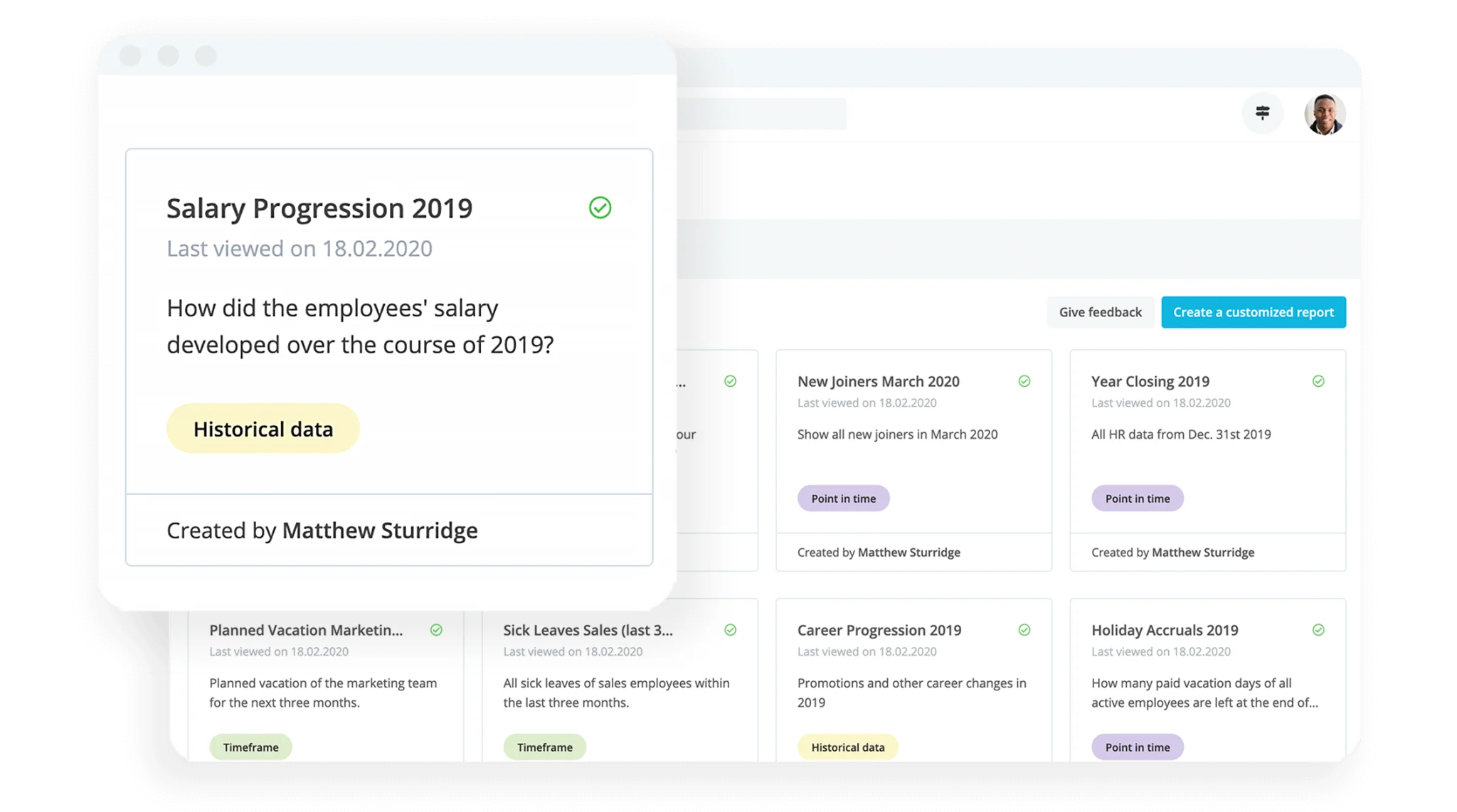Understanding Headcount in HR

What do HR teams mean when they use the word headcount? Headcount is an extremely important term in the modern workplace. In this article, we offer a quick definition, the importance of headcount for HR and new ways to think about it starting today.
Download nowWhat does headcount mean?
Headcount, otherwise known as workplace census, is the number of people that are currently working in your organisation. When speaking about headcount, it usually involves all of the employees of a company, regardless of status. That includes:
Part-time employees
Freelance workers
Temporary workers
Contract workers
Employees on parental or long-term leave
Why does tracking headcount matter?
Headcount is an extremely important metric, for both HR and the entire business, because it offers a clear picture of the number of people working in your organisation. This helps to improve workforce planning, staffing concerns and contingency planning.
The larger the organisation, the more complex the headcount. This also helps pull back the layers of your organisation to help see where you stand, plan for the moment and plan ahead for the future. Investing in tracking headcount is a great overall baseline.
The importance of headcount for HR managers
Headcount may not feel immediately important for small companies, because you can keep an eye on how many people you’re employing at a glance. But, if you have any sorts of plans to grow, the need for tracking headcount becomes exponentially important.
As an organisation scale, headcount becomes essential to assess and maintain a productive and functioning workforce. This is especially true in turbulent times, where organisational changes may happen at a moment’s notice and plans need to be made in advance.
For busy HR teams, tracking headcount can help in the following disciplines:
Analysing workforce growth so that you don’t overstaffed for certain positions
Ensuring that you provide all of your employees with all the necessary tools and resources so that they can be productive at their jobs
Providing crucial data when it comes to the hiring process and budgeting needs
How to properly calculate headcount

To have a complete headcount calculation, you would need to define certain parameters:
What will you classify as a worker
What will be the overall goal of the headcount
What are the budget requirements to maintain this workforce
How will you store the data in a single, but easily-accessible place.
Worker classification
When performing headcount, you will need to be completely clear on your definition of a worker in the company. Coming from an HR department, you will probably look at all of your “workers” as workers. But if you would ask the finance department what they consider a worker, they might not think to include your freelance, contract or part-time employees.
So you need to collaborate between all company departments and determine how you will classify your workers when doing a headcount.
Overall goal
Determining what the ultimate goal of tracking headcount will provide not only guidance, but also buy-in from other departments. Because you’re not doing something for the sake of doing it – you have a bigger goal in mind.
You can get a lot of important information when doing a headcount such as the salaries of all your employees, the categorisation of roles in your company (junior, mid-level, senior), for hiring information (churn, turnover, and recruiting needs), etc.
So whatever the reason for doing the headcount, make sure that you communicate that to other departments and teams in the company.
Budgetary requirements
You should gather the salary information for all of your employees. This is an important piece of information that is essential to your finance department so that they can plan the company’s yearly expenses.
On top of that, dividing your candidates into junior, mid-level and senior roles will help as well. Seniority also plays a role when it comes to salary requirements since seasoned employees are usually paid more than their junior counterparts.
The later analysis of data can provide you with the salary benchmarks for your employees, so that you know how many of them are in the £25,000-50,000 range, how many are in the £50,000-75,000 range, and how many are above £75,000.
Storing data
Know in advance where you will store all of your critical employee data. Smaller companies have leeway to store the data in multiple files on multiple platforms, but bigger companies with more complex workforces will get lost far too easily.
Maintain an accessible headcount document or ‘single source of truth’ where you will not only store information, but easily access all of it when the time requires.
What can you do with insights from headcount?
When you have an idea of your headcount immediately at hand, you can begin to make important decisions that answer some of these fundamental questions:
Do we have the talent we need in the right places?
Is there balance between our departments and disciplines?
Do we need to rethink our employee resourcing strategy?
How can we best prepare for certain changes in the organisation?
For example, imagine that you’re hiring a new senior developer in your company. You would want to know what the salary range for that job is in your company.
So, you take a look at your headcount and see how much your senior developers earn at similar roles in your company and offer similar terms to your new employee.
Or, you inspect your headcount and realise that you’re missing three people in your company on mission-critical positions. So you decide to go through a hiring cycle to find three new people to fill these gaps.
Instant reporting with Personio's analytics suite
Personio is an all-in-one HR software solution that can help upgrade your people operations. One of the best ways it can do this is by immediately generating headcount reports at the click of a button.
With Personio’s Analytics feature, it’s really that simple (and that fast).
Looking to learn more about how HR software can revolutionise the way you work? Consider speaking with one of our HR experts today. They can field all of your questions and help determine the best way forward for your organisation today.


